
Gifted to Give—500 Years of Christianity in the Philippines
Deacon Patrick Constantino
On March 16, The Most Reverend Clarence Silva, Bishop of the Diocese of Honolulu, Roman Catholic Church in the State of Hawai‘i, led a Mass at the Cathedral Basilica of Our Lady of Peace on March 16, 2021 to begin a year-long celebration through April 2022.
Fr. Pascual Abaya, Rector and Pastor of the Cathedral Basilica of Our Lady of Peace, is from the Philippines from Candon City, Ilocos Sur. He’s been ordained for twenty five years and has served in many ministries and parishes in the Philippines before coming to Hawai‘i. He served as Parochial Vicar, Parish Administrator, Pastor and Director of Vocations. It was inspiring for me to join in this Mass celebration on live stream, to listen and to see the many priests, deacons, religious, of Filipino ancestry. Fr. Pascual Abaya delivered an inspiring homily for this celebration.
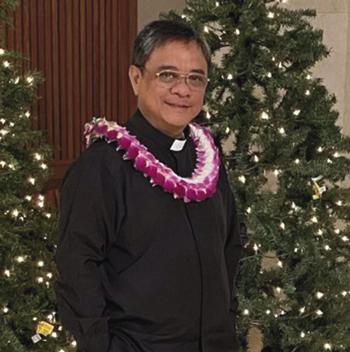
Photo: Darlene Cachola
With his permission, Fr. Abaya’s homily is reprinted here.
Before anything else, I would like to make a disclaimer that I am not a historian. I will do my best to present some historical information and if ever, correct me if I am wrong.
Your Excellency, The Most Reverend Clarence Silva, Bishop of the Diocese of Honolulu of the State of Hawai‘i, Reverend Monsignori, Brother-Priests, Reverend Deacons, Religious Sisters and Brothers, and the People of God who are here inside the Cathedral Basilica and those who are joining us through our live feed, Mabuhay!
Today, we are gathered here at the Cathedral Basilica of Our Lady of Peace to remember a story of God’s pure grace or Amazing Grace, if you will, that is unearned, unmerited, undeserved and gifted, to the fabled ‘Isles of the West’ in ‘The Land of the Morning,’ our Lupang Hinirang known as the Philippines.
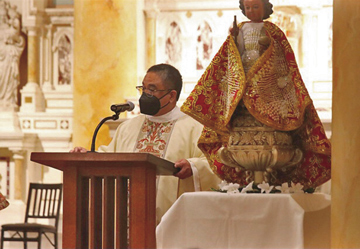
Photo: Dan Abina, Diocesan Catholic Church of Honolulu
This story of God’s Grace started on the 16th day of March 1521 when explorer Ferdinand Magellan and his Spanish fleet accidentally came up on the island of Cebu while on expedition in search of resources in the Moluccas. Only two weeks thereafter on the 31st Day of March 1521, the chaplain of the expedition, Father Pedro de Valderama, celebrated the first Mass on the island of Cebu and on April 14, 1521, he baptized on the same island King Rajah Humabon and Queen Hara Humamay including eight hundred of their subjects. Magellan gave as a gift to the wife the image of the Holy Child, known as Santo Niño. Thus, the story of God’s amazing grace has started; the first seed of God’s Kingdom sown on La Perla del Mar Oriente—the Philippines.
In view of God’s amazing grace happening in history and in mystery at a definite time and space, it is only fitting and proper that we celebrate today in joy and thanksgiving resonating with Psalmist’s song:
This is the LORD’s doing, and it is marvelous in our eyes.
This is the day the LORD has made, let us rejoice and be glad in it (Psalm 115, 22–24).
In remembrance of that story of grace, I would like us to consider two points: (1) to scan swiftly our historical past to remember in thanksgiving, then briefly to spend some time in our living present to reflect in faith; and (2) and finally focus on our vision of the future to hope for. In other words, let’s look back in gratitude; look within in faith; and look ahead in hope at this marvelous gift of God. A word on each point.
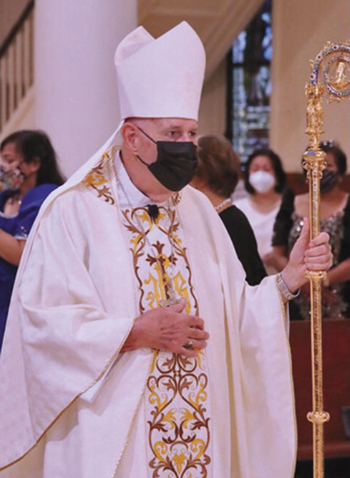
Photo: Dan Abina,Diocesan Catholic Church of Honolulu
1) The Past and the Present we remember in Gratitude and Faith!
For the seed of God’s kingdom, sown in the Philippines in 1521, to take root, to flower and to bear fruit, it was not till fifty plus years later for this to happen gradually when conquistador Miguel López de Legaspi and Fray Andrada, were zealous to implement Spain’s policy of colonization and Christianization by means of the sword and the cross, who arrived via Mexico in the Philippines in 1575. The next three hundred plus years saw the fruition of God’s Kingdom in the Philippines with mixed and ambiguous results in terms of what historians and theologians call today a baroque church, that is: medieval in shape and form, Castilian in organization and administration, and monastic in pastorals and theology.
The collapse of Spain’s power and force in 1896 placed in jeopardy God’s Kingdom of Grace. It was at this moment of crisis, when a new set of missionaries from the United States of America and Europe came to the rescue with no other power than that of God’s Word and the Cross of the Lord Jesus Christ turning in effect the situation of crisis into an opportunity of renewal for the Church in the Philippines.
Since the 1900s up to the present, the Church of the Philippines has been favored with (1) two canonized Saints: San Lorenzo Ruiz de Manila and San Pedro Calungsod of Cebu, (2) thousands of dedicated priests, religious and diocesan; (3) hundreds of Archbishops and Bishops; (4) eight Cardinals, (5) thousands of religious men and women of consecrated life, (6) thousands of lay missionaries and organizations, and (6) last but not the least, a large number of Catholic faithful comprising eighty percent of the total population, in fact the third largest number of Catholics in the world after Mexico and Brazil.
Meanwhile, in the process of growth and maturity, the Church in the Philippines came to discover her missionary dimension that defines her essence and existence, her nature and substance. Not only is it the gifted or receiving church but it has become the giving or sending church. Go to any diocese from Alaska to Argentina, from New York to Japan, and most of the dioceses in countries in between, the chances are that you’ll find a Filipino priest and/or Religious Sister or Brother ministering to the people of God there.
A concrete case in point is the presence of Filipino priests in the Diocese of Honolulu; a presence that dates back as early as 1917 when Fr. Ignacio Cordero from Nueva Segovia arrived in Hawai‘i to minister briefly to the spiritual needs of thousands of migrant Filipino workers who were mostly Ilocanos. In 1949, Msgr. Osmundo Calip, also from Nueva Segovia, came to Hawai‘i to do mission work here. One outstanding result of Msgr. Calip’s Hawai‘i mission was the creation of Filipino Catholic Clubs known as FCC all over the islands to minister to the spiritual, cultural, and educational needs of Filipino workers. FCC are still active in most parishes of the diocese to this date.
In the late 1980s, the breakthrough came with the creation of the Filipino Ministry under the Office for Ethnic Ministries with the Diocesan Chancellor, a Maryknoll sister, a Filipina from Tagudin, Ilocos Sur as Director. Through then Archbishop, now retired Cardinal Quevedo of Nueva Segovia, Bishop Francis DiLorenzo and Sr. Grace Dorothy Lim, the Filipino Ministry in the Diocese of Honolulu was formalized in a Memorandum of Agreement (MOA). Shortly thereafter, Archbishop Quevedo sent the first batch of Filipino missionaries from Nueva Segovia.
Initially, the Nueva Segovia missionaries in Hawai‘i ministered only to Filipinos as ‘itinerant apostles’ going around to parishes, if and when welcomed by resident pastors, giving retreats, catechesis, prayer services, celebrating the sacraments among Filipinos. Because of the need for priests to administrative services to parishes, these ‘itinerant missionaries’ were eventually assigned to parishes as administrators, parochial vicars and even as pastors, if incardinated to the Diocese, in effect ministering to all Catholics—even to non-Filipinos.
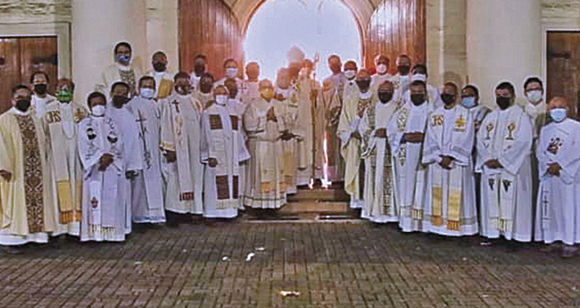
Photo: Dan Abina-Diocesan Catholic Church of Honolulu
This presence of the Filipino Clergy and Religious in the Diocese of Hawai‘i is a welcome development pastorally and theologically: pastorally, for the obvious and practical reason of necessity; theologically, because the Church is missionary by nature and essence. She is sent, ‘missioned,’ if you will, by Christ, the Lord Himself, to evangelize the whole world, helping out to build the Kingdom of God on earth. It is a welcome thought, too, as we are celebrating today the 500 years of Christianity in the Philippines in the spirit of the celebration’s theme: GIFTED TO GIVE. Yes, indeed, my sisters and brothers in Christ, we are celebrating our GIFTEDNESS from God in order to GIVE that GIFT OF FAITH to the world, specially to the Diocese of Honolulu. Bishop Broderick Pabillo, the current Administrator of the Archdiocese of Manila, shared this inspiring statement at the opening of the 500th Year Celebration of Christianity in the Philippines: ‘Filipino migrants and missionaries also strengthen the Church in most of the two hundred countries all over the world where they are found. This is something to celebrate. The Philippines, gifted with the faith has, in turn, gifted the universal Church in many ways. On the 500th year of its Christianization, we join the Philippine Church and our fellow Filipinos in this joyful and grateful remembrance of God’s generous gift of faith.’
My dear friends, as, indeed, the Kingdom of God in the Philippines, whose seed was sown in 1521, has taken root to grow, to bloom, to flower and to bear fruit over 500 years through God’s goodness and grace, it is understandable that the Church in the Philippines feels happy that she has carried out our Lord, Jesus Christ’s missionary mandate to help in building up God’s Kingdom in the world with as much fidelity as she could muster and with as much success as with God’s grace the church in the Philippines could accomplish. In view of this, it is only fitting and proper that the theme of the 5th Centennial of Christianity in the Philippines is: GIFTED TO GIVE echoing the words of the Gospel: ‘What you received as a gift, give as a gift!’ (Mt 10:8) May the memory of 500 years of Christianity in the Philippines be a blessing to us in 2021 and beyond!
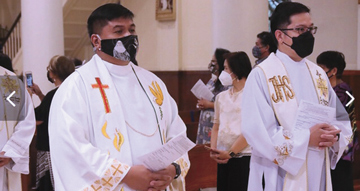
Photo: Dan Abina-Diocesan Catholic Church of Honolulu
2) The Future we can Believe in and Hope for!
After all is said and done, what more is there for the Church of the Philippines to do going forward in 2021 and beyond? A lot, my dear friends; quite a lot, indeed; for the simple reason that the Kingdom of God on earth has yet to reach its fullness, which is, in the words of the preface of the Feast of Christ the King: The Kingdom of Love and Peace, of Truth and Life, of Holiness and Grace! Of course, the Kingdom of God, as biblical theologians assure us that this kingdom has already started in the life and ministry of Jesus Christ on earth; however, its fullness is yet to be fulfilled in God’s own time and space. The Kingdom of God on earth lives out the healthy tension of ‘the already’ and ‘the not yet.’
We are amazed at how the Church in the Philippines has struggled to live out this tension throughout her life and ministry from 1521 to 2021 following in the footsteps of Jesus Christ, who gave Himself totally in the service of the ‘already-present’ (Mt 12:28; Lk 11:20; 17:21) and the ‘not yet-future’ (Mt 8:11) of the divine reign. In other words, through Jesus Christ’s ministry of preaching and teaching; specially, that of doing miracles (Mt 4:23; 9:35) while here on earth, God’s final reign (or Kingdom), is already operational and operative in the here and now. His parables, in particular, indicate that the future Kingdom God at the end of time is a reality that begins to take shape and form in the here and now of the present.
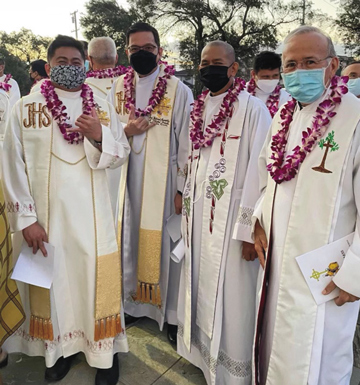
Photo: Dan Abina-Diocesan Catholic Church of Honolulu
And that, my friends, dearly beloved in Christ, is the challenge our celebration of the 500 years of Christianity in the Philippines invites and urges us to embrace and take-up, especially in a world so divided and troubled. What is there for us to do moving forward in 2021 and beyond? A sincere suggestion, if I may, as one pastor serving in this Diocese of the Aloha State: May we continue believing in our Lord’s proclamation that ‘the Kingdom of God is near at hand, repent and believe in the Gospel!’ In other words, let’s have that Faith that does the Gospel values of God’s Kingdom and works with our best efforts for these values of ‘truth and life … of holiness and grace … of justice, love and peace.’ (Preface of Christ, the King of the Universe). In so doing, we shall be doing part in making God’s Kingdom on earth a reality that is operative and operational.
Let us then give this challenge our best efforts with utter seriousness and join our beloved Bishop Larry with his Episcopal Motto, Witness to Jesus, as we continue to embark our mission here in the Diocese of Honolulu, Stewards of the Gospel. The cause to continue building it up is God’s, for it is through Him are the power and the glory. ‘Not to us, O Lord,’ sings the Psalmist: ‘not to us, O Lord, but to your name we give glory’ (Ps 115:1).
May the good Lord Jesus Christ who began the work of building up God’s Kingdom on earth, continue it through us and bring it to fulfillment for us.
Lastly, we commend ourselves residing in these beautiful Islands of Hawai‘i and those living in El Pueblo Amante de Maria, the Philippines, to the Blessed Virgin Mary, our Lady of Peace to feed us with her inspiration, to lead us with her direction, and to speed us with her intercession in our mission of building up God’s Kingdom on earth.
Amen.
Let us be inspired by this celebration and continue to be for one another, in spite of this pandemic, nothing can stop us. For we are Gifted to Give. God will provide us the necessary gifts we need!
God Is Good? All The Time!
All The Time! God Is Good!
Keep The Faith? Share The Love!
Share The Love! Keep The Faith!
Jesus, I trust in You! Amen!
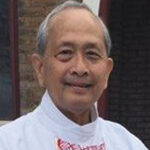 On June 18, 1987, Patrick Constantino was ordained as the first Deacon of Filipino ancestry for the Roman Catholic Church in Hawai‘i. For twenty-two years, he served as Administrator at Holy Rosary Church in Pāia, St. Rita Church in Ha‘ikū and St. Gabriel Church in Ke‘anae. Constantino is presently assigned to St. Joseph Church in Makawao.
On June 18, 1987, Patrick Constantino was ordained as the first Deacon of Filipino ancestry for the Roman Catholic Church in Hawai‘i. For twenty-two years, he served as Administrator at Holy Rosary Church in Pāia, St. Rita Church in Ha‘ikū and St. Gabriel Church in Ke‘anae. Constantino is presently assigned to St. Joseph Church in Makawao.
Prior to his ordination, Constantino was in government—first appointed in 1966 as Assistant Sergeant of Arms by the Speaker of the House Elmer F. Cravalho. When Cravalho became Maui’s first Mayor, Constantino became his Executive Assistant—the first of Filipino ancestry. Later, Constantino became the first County Treasurer of Filipino ancestry and the first County Grants Administrator and Risk Manager of Filipino ancestry.
Constantino has served as a Deacon for thirty-three years and married to his lovely wife Corazon for fifty-nine years.
